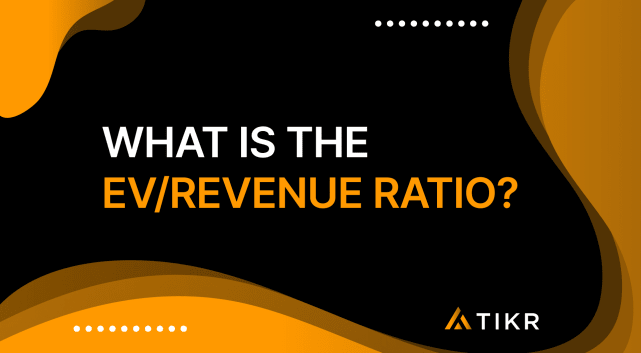The TIKR Blog
Sharing actionable investing insights, in-depth stock analysis, and expert tips to help you make smarter investment decisions and think like a business owner.
Latest Posts
Discover our most recent fundamental investing insights.

EV/Revenue Ratio | Definition, Formula, and How to Use It
What is the EV/Revenue Ratio? The EV/Revenue ratio, or the Enterprise Value-to-Revenue ratio, is a particularly useful valuation multiple when analyzing companies that aren’t yet profitable, such as early-stage tech companies or businesses with inconsistent earnings. By focusing on revenue, the EV/Revenue ratio offe

EV/EBIT Ratio: Definition, Calculation & Benefits
What is EV/EBIT? EV/EBIT is a financial ratio that stands for Enterprise Value (EV) to Earnings Before Interest and Taxes (EBIT). This ratio helps long-term investors evaluate whether a company’s stock is fairly valued. EV/EBIT measures the total value an investor would need to acquire a company (including debt obli

Why Nvidia Stock Could Be Risky Today for Investors
Key Takeaways: What is the 2-Minute Valuation Model? There are 3 core factors that drive a stock’s long-term value: The 2-Minute Valuation Model uses a simple formula to value stocks: Expected Normalized EPS * Forward P/E ratio = Expected Share Price Revenue growth and margins drive a company’s long-term normalized

TIKR vs. Finviz: Which Stock Screener is Better?
Stock screeners can be valuable tools for investors because they help filter through thousands of stocks based on specific criteria. This saves investors time by quickly finding the best stocks that fit their investing strategy. Two popular options for stock screeners are TIKR and Finviz. In this article, we’ll comp

What is a Good Operating Margin for a Stock? | Definition & Formula
When a company consistently sees stronger operating margins than its peers, it might indicate that the business has a competitive advantage and can build wealth for its shareholders. In this guide, we’ll cover everything you need to know about operating margins, including how to calculate them, why they matter, what

Palantir Stock Trades at a Sky-High Valuation
Key Takeaways: What is the 2-Minute Valuation Model? There are 3 core factors that drive a stock’s long-term value: The 2-Minute Valuation Model uses a simple formula to value stocks: Expected Normalized EPS * Forward P/E ratio = Expected Share Price Revenue growth and margins drive a company’s long-term normalized

How to Analyze a Company’s Profit Margins: Gross, Operating, and Net
In investing, understanding a company’s profit margins helps to provide a clear picture of how much profit a company retains at different stages of its income statement. These metrics reveal whether a business can control costs, beat competitors, and generate sustainable shareholder returns. In this guide, we’ll bre

How to Analyze a Company’s Competitive Advantage
In the world of investing, few concepts are as powerful yet misunderstood as a company’s competitive advantage. In this guide, we’ll walk through what competitive advantages are, the types of “moats” companies can have, and the key financial and qualitative indicators to spot them. What is a Competitive Advantage? A

What is the Buffett Indicator? | Definition and Formula
What is the Buffett Indicator? The Buffett Indicator, named after legendary investor Warren Buffett, is a simple yet powerful tool that helps investors gauge whether the overall stock market is fairly valued, overvalued, or undervalued. Buffett himself has referred to this ratio as “probably the best single measure

Dividend Payout Ratio: How to Calculate Dividend Safety for Stocks
What is the Dividend Payout Ratio? The dividend payout ratio is a financial metric that shows how much of a company’s earnings are distributed to shareholders as dividends. This ratio is particularly important for dividend investors because it helps to show whether the company can continue to pay and grow its divide

Why ASML Stock Could Be a Hidden Gem for Long-Term Investors
Key Takeaways: What is the 2-Minute Valuation Model? There are 3 core factors that drive a stock’s long-term value: The 2-Minute Valuation Model uses a simple formula to value stocks: Expected Normalized EPS * Forward P/E ratio = Expected Share Price Revenue growth and margins drive a company’s long-term normalized
Join thousands of investors worldwide who use TIKR to supercharge their investment analysis.
